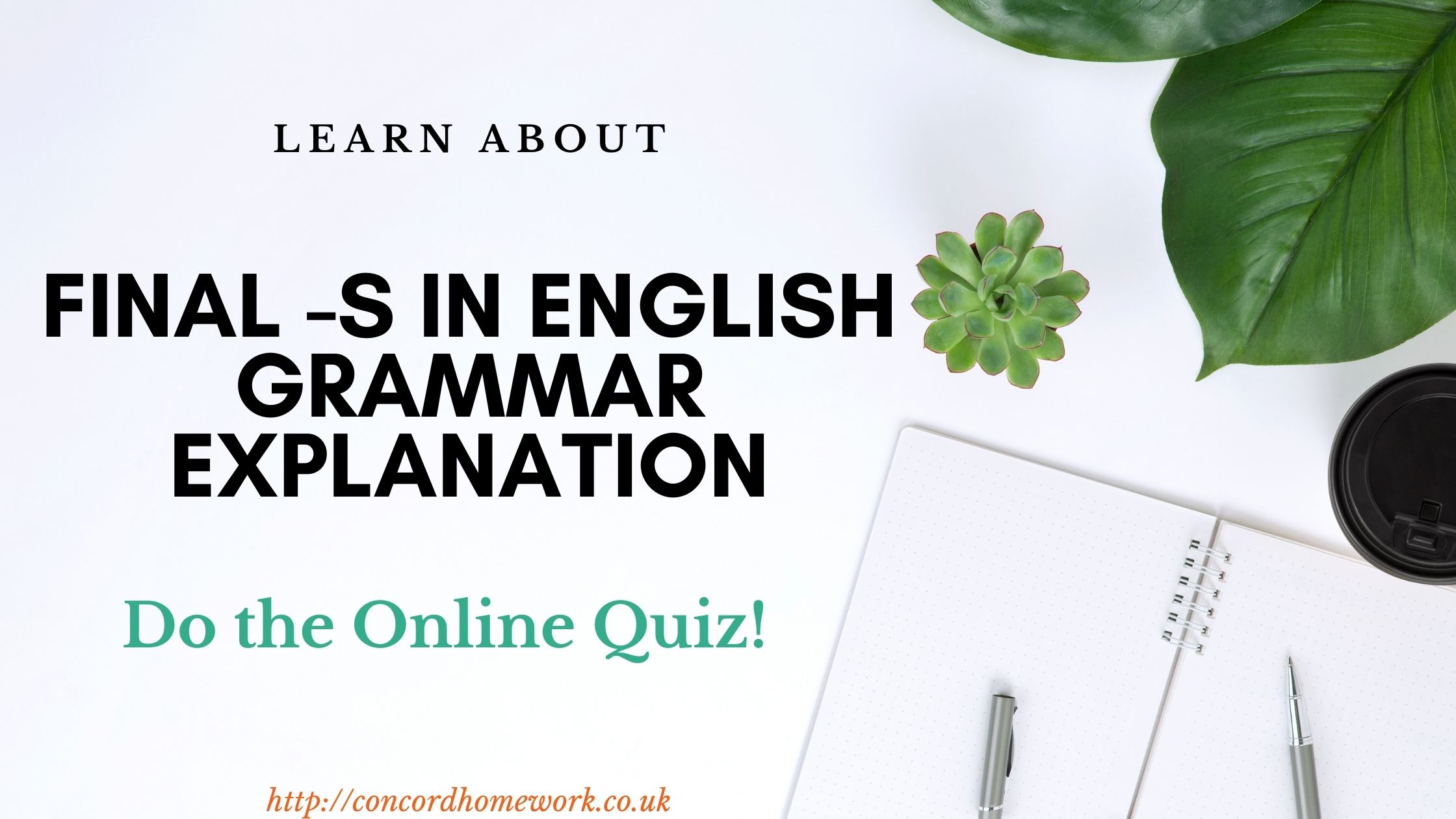The following table explains the use of final -s and -es.
| (a) SINGULAR: one bird (b) PLURAL: two birds, three birds, many birds, all birds, etc | SINGULAR = one, not two or more PLURAL = two, three, or more |
| (c) Birds sing. (d) A bird sings. | A plural noun ends in -s, as in (c) A singular verb ends in -s, as in (d). |
| (e) A bird sings outside my window. It sings loudly. Sally sings beautifully. She sings songs to her children. Steve sings very well. He sings in a chorus. | A singular verb follows a singular subject. Add -s to the simple present verb if tire subject is (1) a singular noun (e.g., a bird, Sally, Steve) or (2) he, she, or it* |
SPELLING OF FINAL -S/-ES
| (a) visit ——–> visits speak ——> speaks (b) ride ——–> rides write ——-> writes | Final -s, not -es, is added to most verbs. INCORRECT: visites, speakes Many verbs end in -e. Final -s is simply added. |
| (c) catch ——> catches wash ——> washes miss ——> misses fix ——> fixes buzz ——> buzzes | Final -es is added to words that end in -ch, -sh, -s, -x and -z. PRONUNCIATION NOTE: Final -es is pronounced /əz/ and adds a syllable. |
| (d) fly ——–> flies (e) pay ——-> pays | If a word ends in a consonant + -y, change the –y to -i and add -es. (INCORRECT: flys) If a word ends in a vowel + -y, simply add -s.* (INCORRECT: paies or payes) |
| (f) go ———> goes /ɡoʊz/ do ———> does /dəz/ have ——> has /hæz/ | The singular forms of the verbs go, do, and have are irregular. |
Download “Final -s in English Grammar Explanation” in PDF.
Download “Final -s in English Grammar Explanation” in PDF.
“Thank you for taking the time to explore this topic with us! We hope you found the information helpful and insightful. Have any thoughts, questions, or additional examples to share? We’d love to hear from you in the comments below!
Don’t forget to spread the word by sharing this blog with your friends, family, and colleagues. Together, let’s continue to learn, grow, and connect with the world around us. Happy reading and sharing!”




















